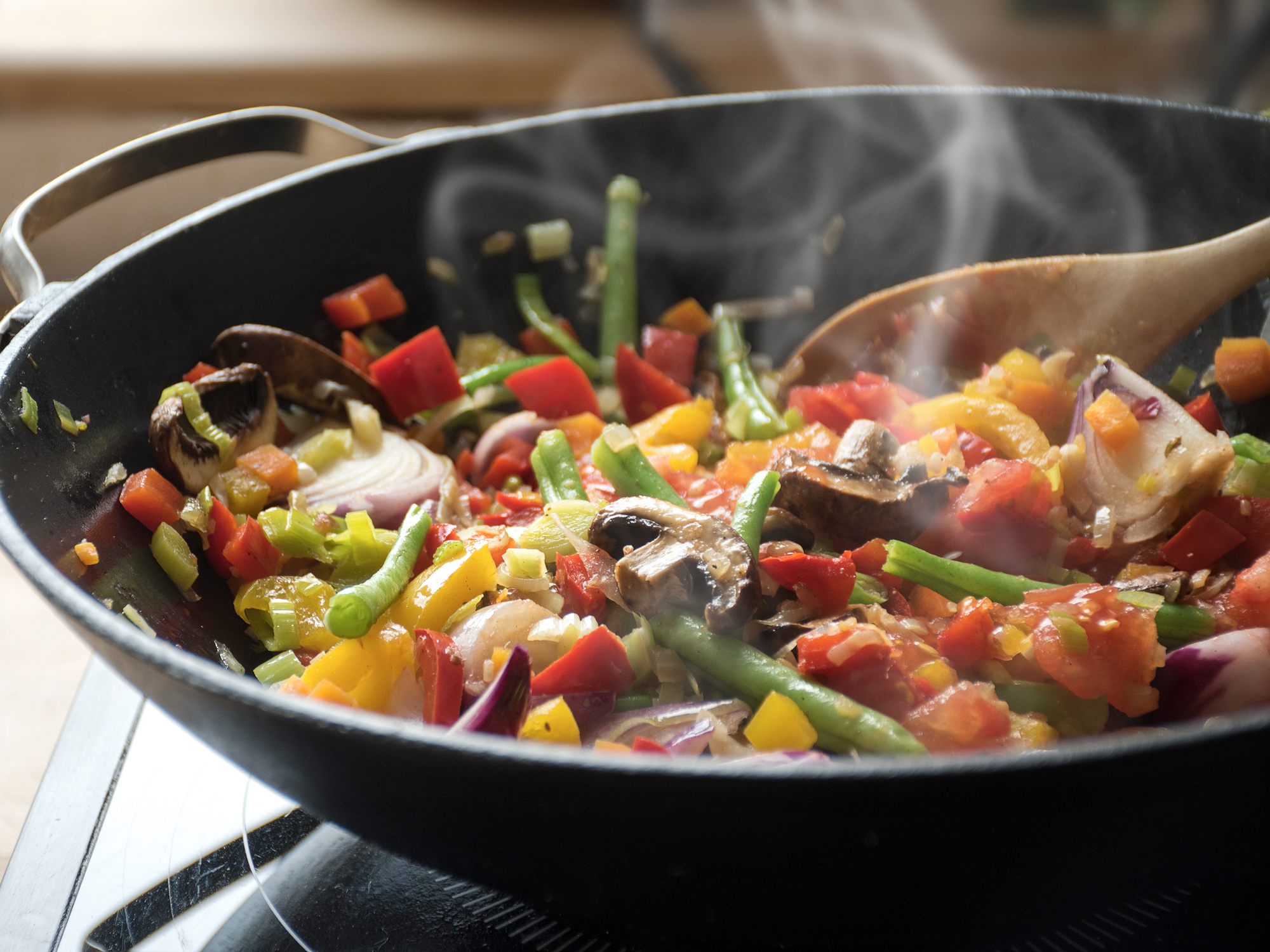Get Easy Health Digest™ in your inbox and don’t miss a thing when you subscribe today. Plus, get the free bonus report, Mother Nature’s Tips, Tricks and Remedies for Cholesterol, Blood Pressure & Blood Sugar as my way of saying welcome to the community!
Stop cooking the disease-fighting compounds out of your food

If you’re carefully selecting healthy foods to fill your plate every day, you’ll also want to pay attention to another crucial component of healthy eating — how you cook your food.
How you cook your food is more important than you probably realize because it influences how much nutrients you end up getting.
You may have heard, for example, that microwaving helps food retain more nutrients than food cooked in other ways. Why?
Well, it all comes down to how long food takes to cook. You see, microwaving cooks food fast. And the longer you cook food, the fewer nutrients you end up with in the finished product.
In fact, you’d be shocked just how much nutrients you lose when you cook certain foods by boiling them or using other high-heat cooking methods.
By the time these foods make it to your plate, they’re devoid of the healthy nutrients you purchased them for in the first place… and broccoli sprouts are the perfect example…
Are you cooking away your nutrients?
If you know anything about broccoli sprouts, you know that they’re cancer-fighting powerhouses…
They contain compounds called glucosinolates, which are found in full-grown broccoli and other cruciferous vegetables too. When these glucosinolates are chopped or chewed, they turn into isothiocyanates, which are known for fighting inflammation and even cancer.
Now, broccoli sprouts contain between 10 to 100 times more glucosinolates than broccoli. So they’re a great addition to any anti-cancer diet. But here’s the problem…
A recent study published in the Journal of Agricultural and Food Chemistry found that these cancer-fighting compounds are basically non-existent in broccoli sprouts that have been boiled. They’re also significantly reduced in broccoli sprouts that have been mildly heated at 140 degrees Fahrenheit.
I know what you’re probably thinking…
Who boils or cooks their broccoli sprouts? Why not just eat them raw?
Well, raw sprouts tend to contain dangerous bacteria like E.coli and Salmonella. Heating can help kill some of these bad guys. But unfortunately, it kills some of the good nutrients too.
In the study, researchers solved this problem by using high-pressure processing, a type of cold pasteurization, that kills bacteria while leaving most of the healthy cancer-fighting compounds intact.
That’s obviously not something you can do at home to your own sprouts, but that’s okay. The point here extends far beyond broccoli sprouts…
This study, like others in the past, shows that when you purchase healthy foods because they contain certain compounds or nutrients, you may not be getting what you paid for unless you cook them the right way…
Getting the most from broccoli sprouts (and other veggies)
When it comes to eating sprouts, the safest way to cook them without completely killing the nutrients is to add them to soups, stews, stir-fries or other dishes toward the end of the cooking process. You can also roast them briefly in the oven.
For vegetables in general, studies show microwaving may be the best cooking method for maintaining as many nutrients as possible. In the case of broccoli, for example, microwaving helps preserve the most vitamin C.
Steaming broccoli and other vegetables is also a good choice. Studies show steaming is one of the best ways to keep glucosinolates from flying the coop during the cooking process… and you definitely want to keep as many of these carcinogen-fighting compounds around as possible!
Editor’s note: Discover how to live a cancer prevention lifestyle — using foods, vitamins, minerals and herbs — as well as little-known therapies allowed in other countries but denied to you by American mainstream medicine. Click here to discover Surviving Cancer! A Comprehensive Guide to Understanding the Causes, Treatments and Big Business Behind Medicine’s Most Frightening Diagnosis!
Sources:
- Ensuring broccoli sprouts retain their cancer-fighting compounds — EurekaAlert! Retrieved October 17, 2017.
- Westphal, et al. “High-Pressure Processing of Broccoli Sprouts: Influence on Bioactivation of Glucosinolates to Isothiocyanates.” — Journal of Agricultural and Food Chemistry. 2017, 65 (39): 8578–8585.
- Cruciferous Vegetables — Oregon State University. Retrieved October 17, 2017.
- Are Sprouts Safe? — Food Safety News. Retrieved October 17, 2017.
- Are Sprouts Safe to Eat? — Academy of Nutrition and Dietetics. Retrieved October 17, 2017.
- The Healthiest Cooking Methods Explained — Time. Retrieved October 17, 2017.












